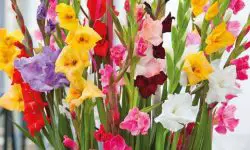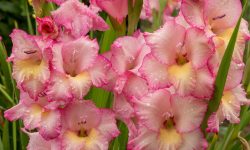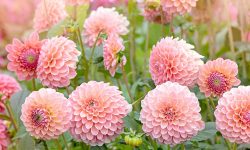Knowing when to prune rhododendrons is the key to enjoying their most spectacular and long-lasting blooms. Pruning at the right time helps preserve next season’s buds, encourages healthy branching, and maintains a balanced, attractive shape. When you understand this timing, you protect your plant’s flowering potential while preventing unnecessary damage. The right approach ensures your rhododendrons stay strong, vibrant, and full of life throughout the year.
With the proper techniques and seasonal care, these stunning shrubs will reward you with breathtaking displays of color and lush green foliage. Mastering when to prune rhododendrons allows you to create a garden centerpiece that draws attention in every blooming season. Whether you are a beginner or an experienced gardener, learning this essential skill will keep your rhododendrons thriving and your garden looking spectacular for many years to come.
Understanding Rhododendron Growth

030616 03062016 03/06/16 03/06/2016 3 3rd June 2016 Farley Hill WTDN Farley Hill Court Garden Berkshire Summer David Hurrion photographer Sarah Cuttle practical task step by step horizontal cut cutting
How Rhododendrons Develop Buds
Rhododendrons form flower buds on old wood during late summer or early autumn. Buds remain dormant through winter until spring. Bud formation relies on adequate sunlight, proper nutrition, and consistent watering. Stressful conditions such as drought or extreme temperatures can prevent bud formation or cause premature bud drop.
Observing bud development is key to determining pruning schedules. Healthy, firm, and well-colored buds indicate that the plant is ready for pruning after flowering. Weak or discolored buds suggest that adjustments in care are needed, including watering, fertilization, or shade management.
By tracking bud formation, gardeners can plan pruning, fertilization, and watering. This ensures energy is directed toward flower production rather than unnecessary vegetative growth. Understanding bud development maximizes blooms while maintaining overall plant health and longevity.
Seasonal Growth Patterns
Rhododendrons have seasonal growth cycles. New shoots emerge in spring, leaves expand in early summer, and buds form in late summer. Recognizing these cycles prevents pruning at the wrong time.
Pruning too early in spring can remove existing flower buds, while late pruning in summer or fall can stress the plant. Following natural growth patterns ensures both strong vegetative growth and abundant flowering.
Seasonal awareness allows gardeners to optimize care, including watering, mulching, and pest control. Healthy plants maintain structural integrity and produce vibrant, long-lasting blooms throughout the flowering season.
Why Timing Matters
Effects of Early Pruning
Pruning rhododendrons too early in spring often removes flower buds formed the previous year. This significantly reduces the number of blooms for that season. Early pruning may also trigger unnecessary vegetative growth at the expense of flowers.
Understanding the plant’s natural growth and bud development is essential. Avoid pruning before flowering unless removing dead or damaged branches. Early intervention can inadvertently weaken the plant and delay flowering.
Proper timing preserves existing buds, allowing energy to be focused on flower production. Early pruning mistakes are easily avoided with careful observation and planning, ensuring the plant remains healthy and blooms abundantly.
Effects of Late Pruning
Late pruning during summer or fall can harm new buds and emerging shoots. The plant may not have sufficient time to recover before winter, leading to stress and reduced flower production.
Damaged buds or stressed branches increase susceptibility to pests and diseases. Weak stems and stunted growth may occur, compromising future flowering.
Pruning immediately after flowering is recommended. This timing ensures structural maintenance, encourages new growth, and preserves next season’s buds. Following this schedule promotes strong plants with vibrant blooms year after year.
Best Time to Prune Rhododendrons
Pruning After Flowering
The best time to prune rhododendrons is immediately after flowering. This timing preserves next season’s flower buds. Removing spent blooms redirects energy from seed production toward healthy bud development, improving the plant’s overall vigor. Deadheading faded flowers also enhances air circulation, which reduces the risk of fungal infections and other diseases.
Pruning at this stage allows gardeners to shape the shrub effectively. Selective removal of crowded or weak branches encourages strong growth without sacrificing blooms. Maintaining proper structure ensures sunlight reaches inner branches, supporting both leaf health and bud formation. Well-timed pruning balances vegetative growth with flower production, creating a visually appealing and healthy plant.
Regular post-flowering pruning establishes a routine that supports long-term plant health. It prevents overgrowth and encourages a consistent display of vibrant blooms each season. Gardeners who follow this practice can enjoy fuller, more uniform flowering while reducing maintenance issues and disease susceptibility.
Avoiding Frost Damage
Pruning too early in spring can expose new shoots and buds to frost damage. Cold temperatures can kill delicate buds, delay flowering, and reduce the plant’s blooming potential. Even partial frost can harm emerging growth, causing deformities or weak stems.
Gardeners should monitor local weather and wait until late frost risks have passed before pruning. Protective measures, such as frost cloth, garden fabric, or extra mulch around the base, safeguard vulnerable buds during cold snaps. These precautions allow pruning to proceed safely without compromising flower development.
Observing frost patterns and adjusting pruning schedules accordingly ensures healthy bud survival and peak bloom quality. Careful timing prevents environmental stress while maintaining plant vigor. Following these strategies helps rhododendrons flourish, producing strong stems, vibrant flowers, and a long-lasting, attractive appearance year after year.
How to Prune Rhododendrons Properly
Tools and Preparation
Using the right tools is essential for effective pruning. Sharp, clean pruning shears, loppers, or saws reduce damage to stems and prevent disease. Dull tools can crush or tear branches, slowing healing and increasing infection risk.
Before starting, disinfect all tools with rubbing alcohol or bleach solution. This prevents spreading pathogens between plants. Having the correct tool for each branch size ensures precise cuts, maintains shrub structure, and supports healthy growth.
Organizing tools and planning cuts before pruning reduces mistakes. Proper preparation allows gardeners to focus on selective trimming, deadheading, and shaping. Using the right tools ensures safety, efficiency, and maximizes bloom production for the following season.
Pruning Techniques
Effective pruning involves selective cutting to maintain shape and preserve buds. Start with dead or damaged branches, then remove weak or overcrowded stems. This improves airflow, sunlight penetration, and overall plant health.
Deadheading spent flowers redirects energy to developing buds, encouraging robust flowering next season. Avoid cutting too close to the main stem, which may cause structural weakness or disease entry points.
Consistent technique ensures balanced vegetative growth and flower production. Combining deadheading with selective branch removal strengthens the plant while maintaining an attractive, natural shape. Proper pruning technique directly impacts bloom quality and longevity.
Encouraging Healthy Growth
Pruning stimulates new vegetative growth while preserving flower buds. Removing old or crowded branches allows resources to focus on healthy shoots and blooms.
Pair pruning with consistent watering, mulching, and fertilization. Adequate soil nutrients and moisture encourage strong stems, vibrant leaves, and abundant flowers. Monitor for pests or disease to maintain plant health.
Regular post-flowering care strengthens rhododendrons, improving resilience against stressors like drought or frost. Healthy plants develop fuller blooms, maintain structural integrity, and ensure consistent flowering year after year. Combining proper pruning with attentive care maximizes bloom potential and long-term garden beauty.
Seasonal Care Tips
Spring Care
Spring is critical for rhododendron growth and flower bud formation. Fertilize with acid-loving plant food to supply essential nutrients. Regular fertilization ensures strong stems and vibrant foliage.
Monitor soil moisture carefully. Water consistently to support new growth, but avoid waterlogging. Mulch around the base retains moisture, regulates soil temperature, and suppresses weeds.
Spring preparation sets the foundation for the season. Removing debris and pruning dead or damaged branches improves airflow. Well-maintained shrubs bloom reliably, resist disease, and develop strong, healthy structures for long-term garden beauty.
Summer Care
Consistent summer care prolongs bloom duration and maintains plant vigor. Water deeply during dry spells, focusing on the root zone. Avoid wetting foliage to reduce fungal disease risk.
Light fertilization supports ongoing growth and flower development. Mulching conserves moisture, reduces soil temperature fluctuations, and suppresses weeds. Thin crowded branches to improve air circulation and light penetration.
Healthy summer care strengthens rhododendrons. Strong plants resist heat stress, produce vibrant flowers, and maintain structural integrity. Monitoring for pests and diseases ensures optimal growth and prepares plants for a successful fall transition.
Fall and Winter Care
Prepare rhododendrons for dormancy by adding extra mulch around roots. This protects them from cold temperatures and frost heaving. Remove fallen leaves to reduce fungal disease risk and keep the garden tidy.
Reduce watering during dormancy but keep soil slightly moist. Avoid heavy pruning, which may damage dormant buds and reduce spring flowering. Observe for frost damage and protect vulnerable plants with garden fabric or mulch as needed.
Proper fall and winter care ensures strong survival and early spring bloom. Healthy plants develop robust buds, resist environmental stress, and produce consistent, long-lasting flowers each year.
Common Rhododendron Mistakes to Avoid
Overwatering
Overwatering rhododendrons can lead to root rot and fungal infections. Roots need oxygen to thrive. Waterlogged soil suffocates them and encourages disease.
Water deeply but infrequently, adjusting based on rainfall. Mulching retains moisture without creating soggy soil. Avoid constant wetness near the crown to prevent stem or root decay. Regularly check soil moisture to ensure ideal hydration levels.
Proper watering promotes strong roots, vibrant leaves, and abundant flowers. Overwatering can cause bud drop, yellowing leaves, and reduced bloom quality. Observing plant responses helps adjust schedules. Balancing soil moisture is essential for long-term rhododendron health and consistent flowering.
Poor Soil Conditions
Rhododendrons require acidic, well-drained soil with a pH of 4.5–6.0. Heavy clay or alkaline soils reduce nutrient absorption and weaken plant structure.
Amend soil with compost, peat moss, or leaf mold to improve texture and acidity. Raised beds or mounds enhance drainage, preventing root stress. Test soil regularly and adjust pH to maintain optimal conditions.
Healthy soil supports strong stems, vigorous growth, and abundant blooms. Proper soil preparation prevents common problems such as poor flowering, stunted growth, and disease susceptibility. Long-term success depends on maintaining soil quality consistently.
Improper Pruning
Pruning at the wrong time can remove flower buds, reducing blooms. Heavy or late pruning may stress plants and inhibit growth.
Prune immediately after flowering, focusing on dead or weak branches while preserving healthy buds. Deadhead spent flowers to redirect energy to developing buds. Avoid cutting too close to the main stem to prevent structural damage.
Proper pruning techniques improve airflow, sunlight penetration, and overall plant vigor. Correct timing and selective cutting ensure robust new growth and maximize bloom potential. Avoiding common pruning mistakes preserves energy for flowering while maintaining shrub aesthetics.
Companion Plants for Extended Garden Color
Choosing the right companion plants enhances the beauty of rhododendrons and prolongs garden interest. Shade-tolerant perennials, such as hostas, ferns, and astilbes, provide texture and contrast. Their foliage complements rhododendron leaves and adds depth to the garden design. Layering plants of different heights creates visual appeal and highlights blooms effectively.
Timing companion plant blooms is crucial for continuous garden color. Early-blooming plants like primroses or bleeding hearts complement early rhododendron flowers. Mid- and late-season companions, including daylilies and hydrangeas, maintain visual interest as rhododendrons fade. Selecting plants with staggered flowering periods ensures a vibrant, dynamic landscape throughout the growing season.
Companion plants also support rhododendron health. Groundcovers and mulch plants help retain soil moisture and regulate temperature. They reduce weed growth and provide natural protection to rhododendron roots. Additionally, planting species with similar soil and light requirements minimizes competition and encourages robust growth for all plants. Thoughtful companion selection enhances both aesthetics and plant health, creating a thriving, colorful garden display.
Indoor Care and Container Rhododendrons
Rhododendrons can thrive indoors or in containers with proper care. Choose a container with good drainage to prevent root rot. Use acidic potting mix designed for azaleas or rhododendrons. Regularly check soil pH and adjust if necessary to maintain nutrient absorption. Containers limit root space, so ensure adequate room for growth and healthy root development.
Indoor light is crucial. Place plants near bright, filtered sunlight or a south-facing window. Avoid direct midday sun, which can scorch leaves. Consistent lighting encourages flowering and prevents leggy growth. Rotate containers periodically to maintain even light exposure and balanced plant shape.
Watering and humidity are key indoors. Keep soil consistently moist, but never waterlogged. High humidity supports leaf health and flower longevity. Use a humidity tray or mist leaves regularly in dry indoor conditions. Fertilize lightly during the growing season with acid-loving plant food. Regular maintenance, including deadheading spent flowers and trimming weak stems, ensures strong growth and vibrant blooms year after year.
Monitoring Bud Development
Observing rhododendron buds is critical for predicting flowering and ensuring plant health. Healthy buds are firm, plump, and display subtle color changes as they mature. Regular monitoring allows gardeners to identify potential issues early, such as frost damage, pest infestations, or disease. Early intervention preserves bloom potential and ensures strong seasonal flowering.
Check buds frequently during late winter and early spring. Remove damaged or diseased buds to prevent infections from spreading. Lightly pruning weak or overcrowded stems improves airflow and light penetration, supporting bud development. Record observations to track growth patterns, which helps plan watering, fertilization, and pruning schedules. Understanding local climate effects, such as late frosts or heat waves, enables adjustments to care routines and protects emerging buds.
Monitoring bud development also guides gardeners in enhancing flower quality. Consistent observation ensures proper nutrition, soil moisture, and environmental conditions are maintained. Healthy buds lead to strong blooms with vibrant color and long-lasting petals. By tracking bud progress, gardeners can anticipate peak flowering periods, plan companion planting, and schedule maintenance activities efficiently. Attentive monitoring is key to achieving a thriving, visually stunning rhododendron display year after year.
Enhancing Flower Longevity
Extending rhododendron bloom life requires consistent care and attention to environmental conditions. Adequate watering supports strong, healthy flowers. Avoid overwatering, which can promote fungal disease. Maintaining stable soil moisture ensures buds and blooms receive proper hydration.
Proper nutrition enhances flower longevity. Fertilize with acid-loving plant food during active growth to provide essential nutrients. Deadhead spent blooms promptly to redirect plant energy toward developing new buds. This practice improves future flowering potential while maintaining plant vigor.
Environmental factors also affect bloom duration. Protect plants from extreme heat, frost, and strong winds. Mulch conserves soil moisture and regulates temperature, further supporting flower health. Monitoring for pests like aphids or spider mites prevents damage to petals and buds. Consistent, careful maintenance ensures vibrant, long-lasting blooms that enhance garden beauty and provide a thriving seasonal display.
Advanced Tips for Indoor and Container Rhododendrons
Soil and Container Selection
Choosing the right container and soil is essential for healthy rhododendrons. Use pots with proper drainage holes to prevent waterlogging, which can cause root rot. Select an acidic potting mix specifically designed for azaleas or rhododendrons. This ensures adequate nutrient availability and promotes strong root development.
Regular soil testing helps maintain optimal pH. Adjust acidity using sulfur or acidifying fertilizers if necessary. Refreshing the soil every 2–3 years supports continued growth and prevents compaction. Repotting also accommodates root expansion, which is critical in confined container spaces.
Proper soil and container selection sets the foundation for indoor rhododendron health. Healthy roots encourage strong stems, vibrant leaves, and robust blooms. Neglecting this step can lead to stunted growth and poor flowering performance.
Light and Temperature Management
Indoor rhododendrons require bright, filtered sunlight for at least six hours daily. Avoid placing them in direct midday sun, which can scorch leaves. Position near south-facing windows or use grow lights to supplement natural light.
Temperature consistency is crucial. Avoid drafts, heaters, or cold windows, which stress the plant. Maintaining stable temperatures supports bud development and flower quality. Rotating containers weekly ensures even light exposure and balanced plant growth.
By managing light and temperature, gardeners can improve bloom timing and leaf health. Proper environmental control reduces stress, enhances flowering potential, and creates a more resilient indoor plant.
Watering, Humidity, and Fertilization
Keep container soil evenly moist without overwatering. Check moisture levels regularly to prevent drought stress or root rot. Mulching or humidity trays help maintain consistent moisture and increase local humidity.
Fertilize lightly during active growth using acid-loving plant food. Avoid excessive feeding, which can damage roots or inhibit flowering. Deadhead spent flowers and prune weak stems to redirect energy toward new buds.
Monitoring for pests such as spider mites or scale ensures plant health. Consistent watering, humidity control, and fertilization enhance bloom longevity and foliage vitality. Indoor rhododendrons thrive when their environmental needs are carefully managed.
FAQ About When to Prune Rhododendrons
When is the best time to prune rhododendrons?
The best time is immediately after flowering. This preserves next season’s buds and avoids removing blooms. Pruning too early in spring may destroy dormant buds. Avoid late summer or fall pruning, as it can stress the plant and reduce winter hardiness. Observing local climate patterns, especially frost dates, helps choose the optimal pruning window.
How do I know which branches to prune?
Focus on removing dead, damaged, or weak branches first. Remove crossing or overcrowded stems to improve airflow and light penetration. Deadhead spent flowers to redirect energy to healthy buds. Avoid cutting too close to the main stem to prevent structural damage. Selective pruning encourages strong growth and maximizes flowering potential.
How often should rhododendrons be pruned?
Rhododendrons generally require pruning once per year after flowering. Light maintenance pruning can be done throughout the growing season to remove dead or damaged shoots. Avoid frequent heavy pruning, as it can weaken the plant and reduce flower production. Regular observation helps determine minor adjustments needed for optimal health.
Can pruning affect next year’s blooms?
Yes. Pruning at the wrong time removes flower buds, reducing blooms. Pruning immediately after flowering preserves next season’s buds. Correct timing ensures energy is directed toward new growth and flower development. Combining pruning with proper fertilization, watering, and soil care maximizes flower production.
What soil and care conditions support healthy blooms after pruning?
Rhododendrons thrive in acidic, well-drained soil with pH 4.5–6.0. Consistent watering, mulching, and balanced fertilization promote bud formation and flowering. Partial shade with morning sun protects leaves and encourages bloom. Avoid overwatering and waterlogged soil, which can cause root rot and reduce flower production.
Conclusion
Pruning rhododendrons at the right time maximizes blooms and maintains plant health. Proper timing preserves buds and stimulates new growth. Combining pruning, seasonal care, bud monitoring, and companion planting promotes abundant flowers. Avoiding common mistakes ensures vibrant, long-lasting blooms. By following these expert tips, gardeners enjoy consistent, beautiful rhododendron displays year after year while keeping shrubs strong, healthy, and resilient.






